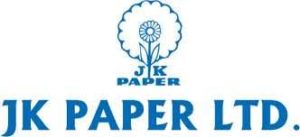
Global paper output increased to 410 million tonnes in 2017 a new high. Packaging boards and industrial kraft papers accounted for the largest share (57%). The Asia Pacific region turned out to be the largest manufacturer of paper and paperboard products (48%) followed by North America and Western Europe. China was the largest market in terms of value while Brazil and India are forecast to report the fastest growth at CAGR of 7.1% and 6.9% respectively between 2017 and 2022. International hardwood pulp prices rallied and touched around US$800 per metric ton, mainly due to supply disruption as pulp mills in Indonesia, Brazil and China ,experienced lower production due to environmental concerns as well as maintenance shutdowns. International prices of pulp and paper have risen. The global paper and packaging board is projected to reach US$321.4 billion in 2024., growing CAGR of 4.82% and gross output of pulp and paper is poised to increase by 1.4% catalysed by incremental demand coming in from the mass retail and e-commerce packaging segment. The Asia Pacific region is expected to account for 34% of the revenues of the global paper and packaging market by 2024. The Indian paper industry accounts for a 4% share of the total global paper output with an estimated turnover of Rs 60,000 crore. India emerged as the fastest growing market. Over the last few years, the per capita paper consumption in india has grown from 11kg in FY2014-15 to 13 kg in FY2017-18, an appreciable increase catalysed by a growth in income, literacy and aspiration levels. India produces diverse varieties of paper from printing and writing grades to packaging boards to coated and specialty papers. Printing and writing paper demand was estimated at about 4.6 million tonnes , growing at about 5% per annum. Packaging board is in high demand with an average annual growth rate of 13-15% from growing end use industries including pharmacy , food, garments , and consumer goods. The sector is mostly fragmented in nature with over 750 paper mills jostling for market for market share with only 50 mills possessing a capacity greater than 50,000 tonnes per annum . Out of this one is JK PAPER. Incorporated in 1960, the company is a part of JK Organisation, which has business interest in automotive tyres, cement , v-belts, oil-seals, agri-seeds, paper and pulp. JK Paper is India’s largest producer of branded paper and is a leading player in the printing and writing segment. The company operated two manufacturing facalities located at Rayagada (Orissa) and songadh (Gujarat) . The production capacities of these facalities are 1,25,000 tonnes per annum (TPA) and 55,000 TPA respectively. Annually , the aggregate output of the company is over 1,80,000 tonnes per year of paper and pulp. 40% of paper produce by the company is sold under various brand names viz. JK Copier, JK Excel Bond, JK Bond, JK Savannah, JK Copier Plus and JK Easy copier. The other major product is JK Maplitho, a superior uncoated writing and printing paper. It is the only company having a wide portfolio of branded products. JK Copier is the flagship brand of company which is largest selling copier brand in Sri Lanka. The company established a 46,000 TPA coating plant to produce international quality coated art paper and boards. The company market’s this product under the brand name JK Cote. It also runs in-house research programme, under which the company is conducting plantation on more than 45,000 hectares of land. The plantation with its superior quality plants provides high quality raw materials. The company is also implementing Total Productive Maintenance with help of Japan institute of plant Maintenance. The company export its products to internal markets located at Sri Lanka, Bangladesh, Middle East, Africa, Australia, Singapore, Malaysia and many more. JK paper will infuse Rs 14.5 billion to expand capacities at its Gujarat plant. The investment will be made towards expansion of packaging board capacity by up to 2,00,000 tonne and pulping facalities by up to 1,60,000 tonne. JK paper has recently acquired Sirpur Paper Mills located at Kagazhnagar in Telangana district. Sirpur Paper Mills will help JK Paper to add 1.4 lakh tonne capacity . JK Paper plans to increase its capacity from 4.55 lakh tonnes to around 6 lakh tonnes by next financial year. The additional 1.38 lakh tonnes will come from Sirpur Paper mills. The company aims to start its production by April 2019. Apart from capacity expansion in Sirpur Paper Mills , the company will further increase its capacity by adding 1.5 lakh tonnes in the next two years. The expansion will focus on packaging board vertical. By such expansion JK paper forecasts 15% CAGR in revenue over next five years. One of the major reasons for this could be lesser expenditure on transportation. For the past few years, the company has been growing raw materials in areas closer to its mills. So, earlier, if the raw materials were available at a distance of 800 km, they can now be obtained within 250 km. Over the years company has managed to bring 1,63,752 hectares of land under plantation. This has led to 100% assured fibre requirement in Orrisa unit and 60% in Gujarat unit. The target is to reach 75% in Gujarat in next few years. This will lead to EBITDA margin improvement of 0.5% . Sirpur mill has been promised access to wood from government forest for 10 years . Additionally, degraded land will be made available exclusively for unit. JK paper’s power cost reduced from 14% of net sales in FY12 to 8.6% in FY18. Company’s power consumption per ton of paper also reduce from 1368 units in FY12 to 1130 units in FY18 on accounts of investments made in conservation of energy equipment. Use of renewable fuel sources is also helping JK Paper to reduce cost. During 2017-18, capacities close to 3 lakh tonnes per annum were shut down in China due to lack of environmental compliance. Indian paper manufacturers will be highly get benefits from this. The Indian paper industry is expected to emerge as the fastest –growing paper market, growing at a rate of about 7% per annum. Recently plactic banned in many states of India will also increase the demand of paper. Despite the continual focus on digitalization , India’s requirement of paper is anticipated to rise by 53% over the next 6 years, principally due to sustained increase in the number of school going children in rural areas. Growing consumerism, modern retail, rising literacy and exponential enlargement of the e-commerce segment will continue to keep the demand for writing and printing paper and packaging board. From demand point of view ,each kilogram of incremental per capita utilization will result in an addition demand of 1 million metric tonnes per annum. The writing and printing paper segment is expected to hold on to its healthy operating margins. All these will be highly benefited to JK Paper. Company’s income from operation grew to Rs 2844.27 crore in 2018 from Rs 1077.18 crore in 2009. Company’s net profit in 2016 was Rs 79.56 crore, which grew to Rs 162.83 crore in 2017 which further grew to Rs 260.14 crore in 2018. JK Paper is generating solid cash flow and steadily reducing leverage. JK Paper has generated Rs 4.471 mn annual average free cash flow over past three years (FY16-FY18), resulting in net debt reducing from Rs 20.8 bn in FY14 to Rs 10.2 bn in FY 18. From all these I prefer buy call on JK PAPER LTD.

